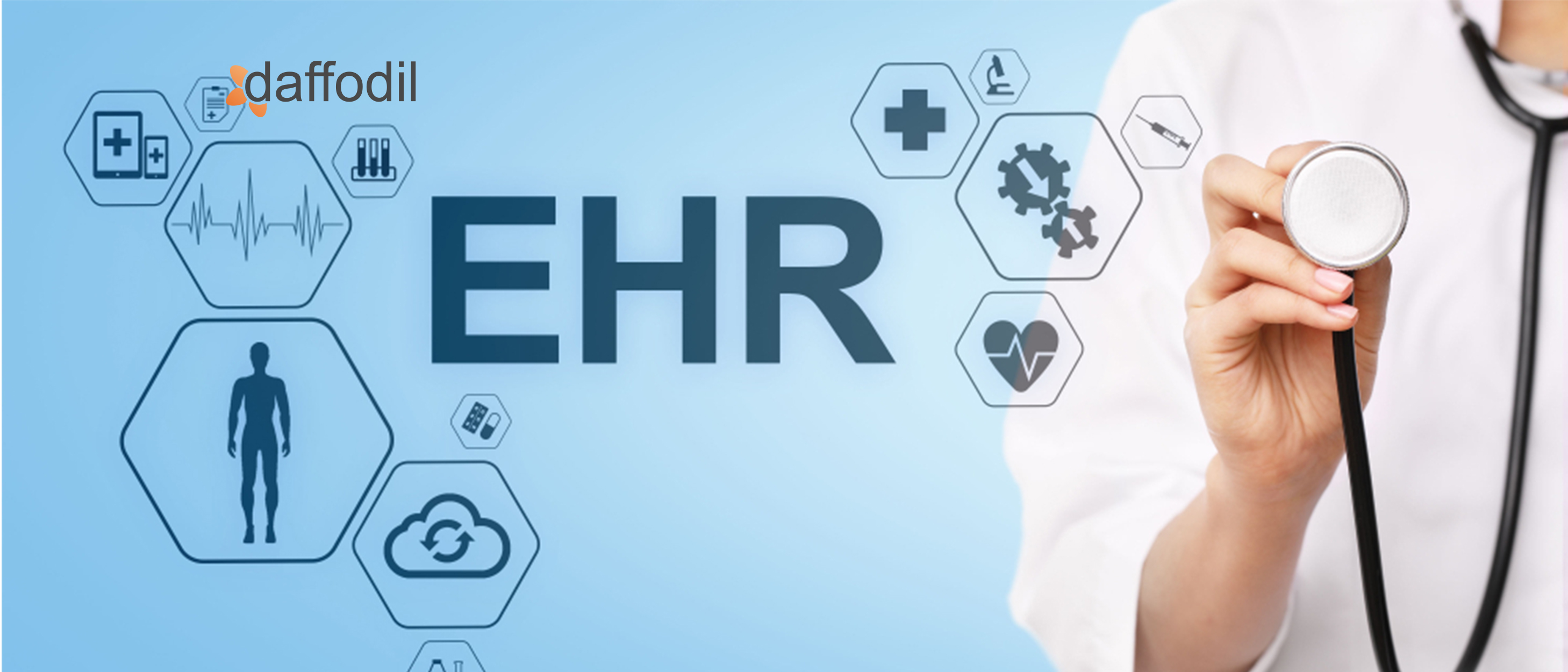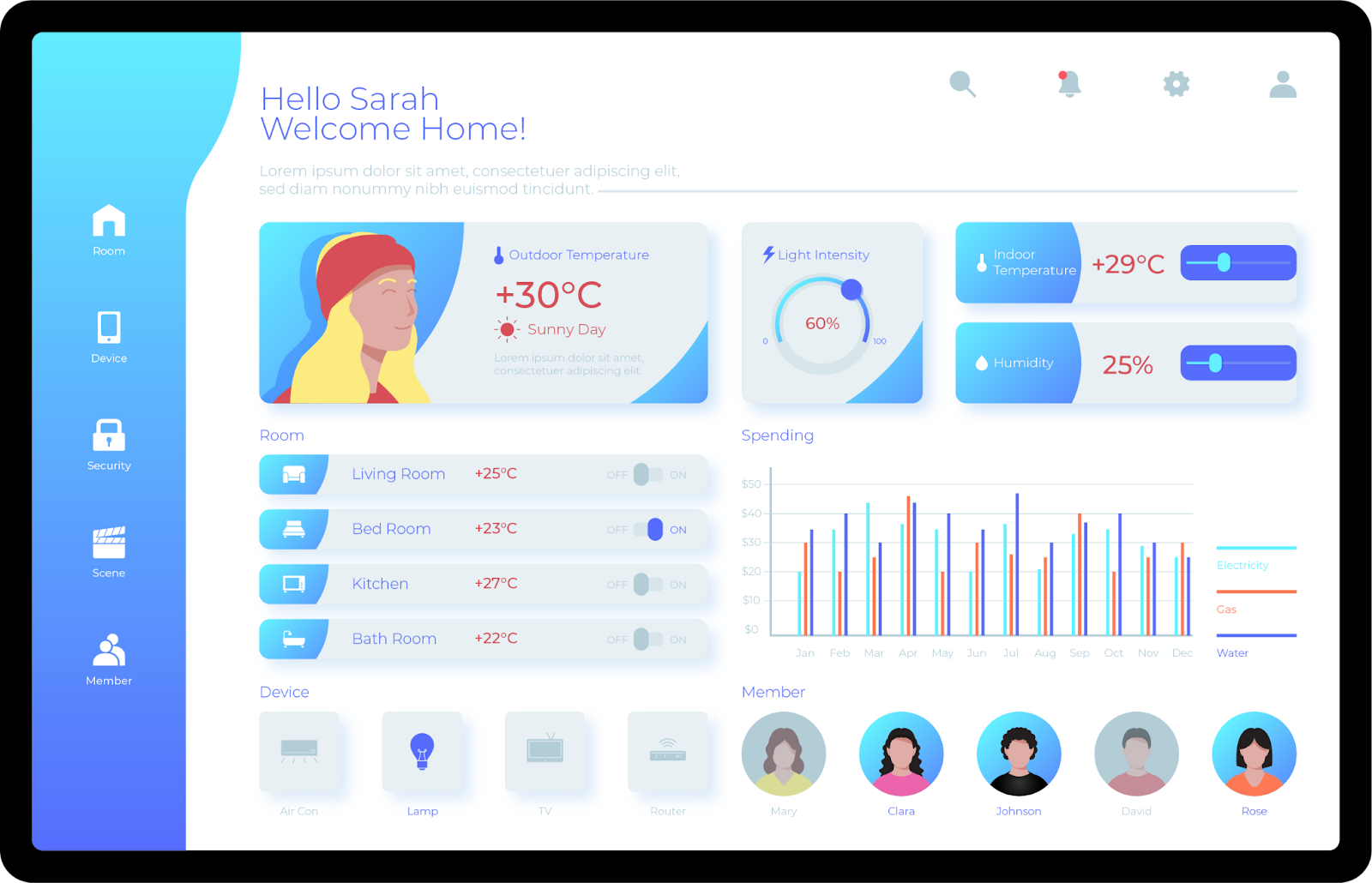
The integration of digital technology has become an integral part of every industry, whether it is for conducting business, medical implementations, or customer engagement. When it comes to medicine, EHR (Electronic Health Record) systems have become the backbone of healthcare organizations. The implementation of EHR systems is now no longer seen as a luxury but a necessity for those looking to tap into the digital health space.
According to Technavio, the global electronic health records market size is estimated to expand by USD 32.27 billion from 2022 to 2027.
In today’s rapidly evolving healthcare landscape, EHR systems have allowed healthcare providers to offer a seamless flow of information and improved medical practice management. These systems have brought numerous benefits, including increased productivity, reduced medical errors, better patient health/quality of care, and much more. In this article, we’ll explore the major benefits of the EHR system that have led to the rise in EHR adoption and how you can get started with it. First, let’s see what an EHR is —
What is EHR System?
Electronic Health Record refers to the digital or electronic version of a patient’s medical information that encompasses all facets of a patient’s health record including medical history, diagnoses, and care continuity throughout their journey in the healthcare organization.
With the rise of EHR software as a critical tool, 93% of American hospitals now use EHR systems within their ecosystem.
EHRs allow clinicians, labs, pharmacies, emergency facilities, medical imaging centers, and patients themselves to share and track up-to-date medical information. It also assists physicians and care providers to streamline decision-making about patients’ care which ultimately improves care coordination and promotes smoother transitions.
Why EHR Integration is essential for your Practice Management System?
EHR systems have significantly transformed the healthcare industry. With its readily accessible and valuable insights, physicians and clinics can now more efficiently treat patients and meet their expectations. Having said that, these EHR systems are designed to go beyond the standard clinical data collected in a physician’s office.
Here are some of the critical points that EHR systems deliver in the field of healthcare and medicine.
Improved Patient Care
The primary reason why almost all healthcare organizations implement EHRs is to interconnect their patient care services throughout the entire ecosystem. This ensures better quality care for patients by facilitating quick access to patient health records for more coordinated and efficient care.
EHRs offer health-related reports and analytics to physicians that help them detect patterns, predict diagnoses, and suggest potential treatment options. It provides real-time reports, clinical alerts, regular reminders, and medical information that helps them streamline clinical decision-making and time-consuming processes.
EHRs also offer convenience to patients by eliminating the need to fill out the same forms at each doctor’s visit. Patients can have the access to all the historical medical information such as lab and imaging results, medications, diagnoses, and more. They can also remotely communicate with their physicians via instant messaging or video calling to update them about any health interventions. Moreover, it can also send electronic prescriptions to pharmacies and allow easier access to follow-up care with required specialists.
Conclusively, both physicians and patients can leverage EHR systems to track the progress of ongoing treatment which can also ease preventive care. It ultimately improves the efficiency of the practice's operations while maximizing treatment effectiveness, leading to more positive clinical outcomes, increased patient satisfaction, and repeat business.
Efficient Workflows
EHRs enable healthcare practitioners to not only provide correct diagnoses but also save time with its centralized practice management system. The integration of all patient medical information into a unified platform can facilitate users with seamless clinical experiences and make healthcare plans more effective.
By leveraging EHR systems, most administrative tasks can be automated, allowing staff and healthcare professionals to focus on providing the best care to their patients and growing their practice.
In addition to improving patient health, scheduling appointments, and managing claims, EHRs provide real-time comprehensive dashboards in the form of bar graphs and pie charts which can derive valuable insights into patient diagnoses and medical history data. It can also check for any possible drug-to-allergy interactions that may occur based on a patient’s current medication and diagnosis.

The EHR system is also equipped with custom templates that assist care providers to document common patient requirements or complaints. These templates can also be tailored to each physician's specific needs. Undeniably, EHR systems focus on delivering better services and quality patient care at all points in the clinical workflow.
Customer Success Story: Daffodil helps one of the UK’s largest private clinic chains implement a customized PMS to improve patient engagement and efficiency by 47%
Enhanced Patient Engagement
EHRs help improves interaction and communication between a patient and a healthcare provider, which leads to increased patient participation in care delivery. Since both patients and providers have access to electronic health information, it becomes convenient for them to connect and collaborate in informed decision-making. Also, It is especially critical to be able to communicate quickly and efficiently when it comes to managing chronic conditions such as asthma, diabetes, and obesity.
By accessing their health records from the comforts of their own homes and devices, patients feel more interested and engaged in their health, which also reduces anxiety by not having to wait until their appointments. This results in higher engagement as the patients are more in control of managing their ongoing treatment procedure.
The more information patients receive regarding future steps or procedures, the more likely they are to cooperate with healthcare providers to get the best possible results.
Cost-effective
By implementing the right EHR solution, you can boost the bottom line of your healthcare organization. Certified EHR systems can dramatically reduce the costs associated with unnecessary data storage, chart pull, re-filing misfiled documents, and so on. With better resource utilization, refined clinical outcomes, and enhanced service quality, you can expand your patient base which can in turn assure higher ROI.
Using EHR, you can also increase the acceptance rates of insurance claims by eliminating errors which can expedite the reimbursement process without any interventions. This can ultimately help clinics and health enterprises improve care delivery and increase patient engagement.
On top of that, healthcare providers can get monetary benefits from the government to implement certified EHR systems and meet the required standards.
Increased Data Security
With EHR systems in place, you can strengthen the security of patient information and perform audits to detect and investigate any unauthorized access to patient records. IT admins can also encrypt data and implement role-based access control (RBAC) so that only authorized users with a decryption key can have the access to it.
In contrast to paper-based patient documentation which has a high risk of data breaches, EHRs can help healthcare practitioners comply with privacy and security regulations such as the Health Insurance Portability and Accountability Act (HIPAA) by ensuring that patient data is protected. It can maintain the integrity of patient data by ensuring that the data is accurate, complete, and consistent.
Read More: Why Healthcare Systems Need To Prioritize Cybersecurity
EHR Adoption: BUILD VS BUY
When you BUILD an EHR solution
The decision to build a custom Electronic Health Record (EHR) solution or to buy an existing one is a complex one, and there are advantages and disadvantages to both approaches. Here are some reasons why building a custom EHR solution can be beneficial for your practice –
1. Customization to Fit your Specific Needs: Building a custom EHR solution gives you full control over the features and functionalities included in the system. By using your own software, you can make sure that it fits your organization's specific needs rather than trying to fit it into preexisting EHR software. This can ultimately improve the efficiency and accuracy of data collection and analysis, as well as streamline and synthesize clinical workflows and improve patient care.
2. Provides High Security: A custom EHR solution can be designed with security in mind from the beginning. As a result, unauthorized access to patient data can be prevented, which is an important concern in healthcare.
3. High Scalability: Building a custom EHR solution provides the opportunity for scalability. Your organization can build a system that can grow as your needs grow, without having to worry about hitting any limitations of a pre-existing system.
4. Seamless Integration: A custom-built EHR solution can be designed to integrate seamlessly with your existing systems and workflows. This can help to reduce disruption and improve efficiency, which can be especially important in a healthcare setting where time is of the essence.
5. Total cost of ownership: Building a custom EHR solution may initially be expensive, but in the long term, it may be more cost-effective than buying and maintaining an existing EHR system. With custom solutions, you won't have to pay licensing fees or maintenance costs for a pre-existing system, and you can make adjustments to the software as needed, rather than relying on third-party vendors to make changes.
However, there are some major requirements while building a custom EHR solution, such as the need for skilled resources, the potential for longer development timelines, and ongoing maintenance requirements.
ALSO READ: Breaking the Misconceptions About an EHR System
When you buy an EHR solution
1. Limited Customization: When you buy EHR solutions from third-party vendors, they may not be fully customizable to the specific needs of your healthcare organization. This can result in inefficiencies as care providers and staff would try to work around the limitations of the system.
2. Lack of Independency: Healthcare organizations that buy EHR solutions are dependent on vendors for constant support, maintenance, and updates. As a result, you will lose control over the system and may face potential delays in resolving issues.
3. Interoperability Challenges: EHR solutions bought from third-party vendors may not easily integrate with the existing systems in your healthcare organization, resulting in additional costs and challenges associated with data exchange and storage.
4. Cost: The cost of third-party EHR solutions can be sky-high, with licensing fees, hardware and software expenses, and ongoing support and employee training costs. However, building an in-house EHR software solution can be expensive at first, but it may provide greater cost control over time.
5. Data Security: Buying an EHR solution from vendors can pose security risks as it may contain vulnerabilities or loopholes that can result in the compromise of sensitive patient information. Healthcare organizations must ensure that the EHR system is secure and compliant with data privacy regulations like HIPAA.
Ultimately, the decision to build or buy an EHR solution will depend on your organization's specific needs, budget, and resources. It's important to carefully evaluate the potential benefits and drawbacks of each approach and to ensure that the selected solution aligns with your organization's goals and objectives.
| BUILD | BUY |
| 1. Customization to fit your specific needs | 1. Limited customization |
| 2. Provides high security | 2. Lack of independency |
| 3. High scalability | 3. Interoperability challenges |
| 4. Seamless integration | 4. Cost |
| 5. Total cost of ownership | 5. Data security |
What are Some Challenges in EHR Integration?
Integrating EHR systems with other healthcare systems can be challenging, which includes:
1. Data Standardization: It can be strenuous to integrate different EHR systems due to the lack of standardization in data exchange protocols. As EHR vendors may use different data formats, terminologies, and communication protocols, it can create data mapping and conversion issues.
2. System Complexity: EHR systems are complex, and incorporating them with existing systems can be a complicated process. The integration process may require significant resources, time, and expertise, including software development, testing, and deployment.
3. High Cost: Integrating EHR systems with pre-existing healthcare systems can be expensive, with costs associated with software development, testing, deployment, and ongoing maintenance.
4. User Adoption: The success of EHR integration depends on user adoption, and care providers may be resistant to changes in their workflows or to using new systems. Healthcare organizations must provide adequate training and support to the users to ensure a higher adoption rate of the integrated EHR system.
Nevertheless, the advantages of EHR systems overshadow such limitations. With a robust strategy and proper guidance, your healthcare organizations can reap maximum benefits from successful EHR integration.
Build a Bespoke Solution for your Healthcare Organization
From streamlining administrative and clinical workflows to instantly accessing patients’ info, EHR offers a plethora of benefits to medical practices. EHR systems have immense potential to improve healthcare outcomes. Nevertheless, preparing for EHR implementation and launch is a complex process that requires readiness and acceptance across the organization.
To fully benefit from electronic health records, healthcare practitioners need a transition strategy that should include choosing a reliable vendor, that can understand their requirements and provide professional EHR integration services.
Need a custom-built EHR system to streamline your HCO? To achieve that, you will need a qualified and experienced software development vendor. Daffodil has 22 years of experience building software systems from the ground up, in the healthcare sector particularly. With the user-centric design and custom functionality, our team will organize and implement the whole system to make the most out of your EHR system. You can also check out our AI Development services in UK.





